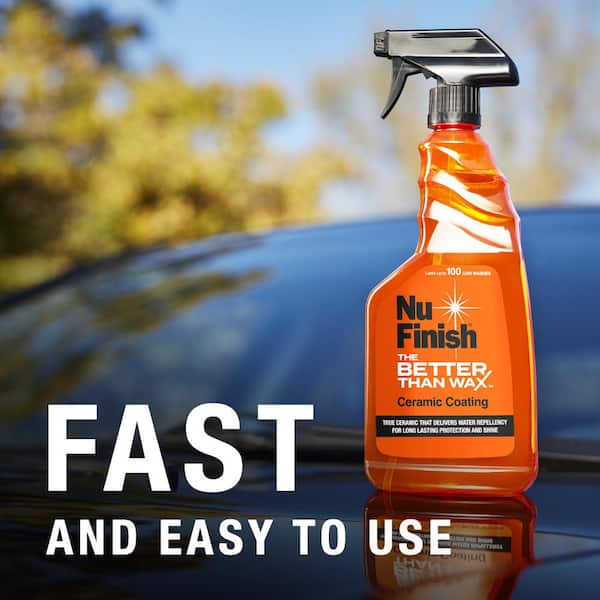Testimonials and Evaluations from Delighted Consumers of Ceramic Coating Philadelphia
Testimonials and Evaluations from Delighted Consumers of Ceramic Coating Philadelphia
Blog Article
Why Ceramic Finishing Is the Ultimate Service for a Perfect End Up
Ceramic layer has emerged as a leading solution for those looking for a perfect surface for their cars, thanks to its remarkable sturdiness and protective attributes. What variables truly set ceramic layer apart?
What Is Ceramic Finish?

When used properly, ceramic finishing produces a hydrophobic surface area that repels water and dirt, making it much easier to clean up and preserve. Unlike traditional waxes or sealers, which usually use brief security, ceramic finishings can last for several years, depending on the item high quality and application approach. The procedure of using ceramic covering requires careful prep work, consisting of extensive cleansing and occasionally paint adjustment, to guarantee ideal bonding and effectiveness.
Ceramic coatings are not restricted to automotive surfaces; they can also be utilized on various products, consisting of glass, metal, and plastics, providing a functional option for boosting security. In general, ceramic covering stands for a substantial innovation in surface security innovation, incorporating both practical and aesthetic benefits for a large range of applications.
Benefits of Ceramic Finishing
While several surface area protection alternatives exist, the benefits of ceramic layer stand apart as a result of its distinct residential or commercial properties and durable efficiency. Among the primary advantages is its remarkable toughness. Ceramic Coating Philadelphia. Unlike conventional wax or sealants that call for frequent reapplication, ceramic finishes supply a resilient layer that can last for a number of years, considerably lowering upkeep efforts
Another remarkable benefit is boosted protection versus environmental impurities. Ceramic coatings produce a hydrophobic surface that repels water, dirt, and various toxins, making it less complicated to clean. This feature not just maintains the car's look but likewise lessens the danger of corrosion and oxidation, specifically in rough climate condition.
In addition, ceramic finishings provide remarkable resistance to UV rays, avoiding fading and degradation of paint gradually. This UV security is important for maintaining the aesthetic value of surfaces and vehicles revealed to guide sunshine.
Furthermore, the glossy surface attained with ceramic finishing boosts the total visual charm, giving surface areas a showroom-quality sparkle. Generally, ceramic finishings represent a substantial improvement in surface protection modern technology, supplying enduring benefits that satisfy both functional and aesthetic demands.
Just How It Works
Recognizing the science behind ceramic finishings exposes how they supply such amazing security and long life. At its core, a ceramic finishing is a liquid polymer that chemically bonds with the vehicle's manufacturing facility paint.
The application procedure involves numerous actions, including surface preparation, which is important to accomplishing optimal bond. As soon as used, the finishing undertakes a curing process, throughout which it hardens and develops a semi-permanent bond with the paint surface. This bond is what distinguishes ceramic finishes from standard waxes and sealants, providing a longer-lasting safety barrier that can endure for many years.
In addition, the density of the finish can enhance its safety top qualities, making sure that it can endure severe conditions. Eventually, the science of ceramic finishes incorporates sophisticated materials with innovative application methods to supply an unmatched degree of defense and visual enhancement for cars.
Contrast With Conventional Techniques
The benefits of ceramic layers end up being particularly apparent when contrasted to conventional paint security techniques such as sealers and waxes. While waxes supply a momentary luster, normally lasting a few weeks to a couple of months, ceramic layers give a durable protective layer that can endure for a number of years. This resilience dramatically minimizes the frequency of reapplication, making ceramic coatings a more cost-effective remedy in time.
Additionally, traditional techniques usually call useful source for extensive prep work and numerous applications to attain an acceptable level of defense. On the other hand, ceramic finishings bond at a molecular degree with the automobile's surface, developing a robust guard against environmental impurities like UV rays, acid rain, and road salts. This bond boosts the automobile's resistance to scrapes and swirl marks, which are common with conventional waxes and sealants.
Additionally, the hydrophobic residential properties of ceramic layers repel water and dust, bring about less complicated cleansing and maintenance. On the other hand, wax and sealant-treated surface areas can bring in gunk, necessitating even more regular washing - Ceramic Coating Philadelphia. In general, ceramic layers not only provide remarkable defense however also supply a much more enduring and aesthetically attractive coating, developing them as the preferred option for discerning vehicle owners
Application and Upkeep Tips

Making use Ceramic Coating Philadelphia of a foam applicator, apply the layer in small sections, adhering to the manufacturer's standards pertaining to density and overlap. Allow adequate curing time in between layers, commonly 1 day, to make sure proper bonding. After application, it is critical to stay clear of direct exposure to water or rough elements for a minimum of a week to allow the coating to completely heal.
For maintenance, clean the car consistently with pH-balanced soaps and avoid unpleasant materials. Touchless car washes are recommended to minimize scratching. In addition, making use of a ceramic upkeep spray can enhance the layer's hydrophobic residential properties and longevity. Normal assessments for any type of indications of wear will certainly help maintain the finish's integrity and maintain that beautiful surface.
Verdict
In verdict, ceramic coating emerges as a superior alternative for accomplishing a remarkable auto coating. Its exceptional longevity, safety qualities, and hydrophobic buildings significantly improve the automobile's look while simplifying upkeep initiatives. By creating a robust bond with manufacturing facility paint, ceramic finish efficiently guards against scrapes, UV rays, and ecological contaminants. With a lifespan prolonging several years, this innovative solution discover here not just maintains yet additionally elevates the total aesthetic allure of automobiles, making it a cost-effective investment for cars and truck fanatics.

Report this page